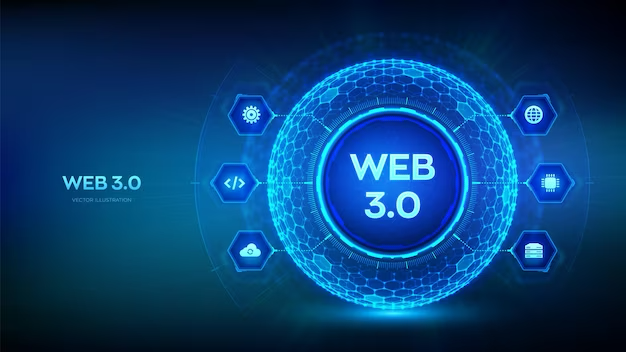
- Posted by : TelivusMedia
- Blog
Web3: A Paradigm Shift in Digital Advertising and What it Means for Marketers
In today’s digital age, the way we consume and interact with online content is evolving at a rapid pace. Enter Web3, a new era of the internet that promises to revolutionize the world of digital advertising. But what exactly is Web3 and how will it impact marketers?
Understanding the Paradigm Shift in Digital Advertising
- Web3 is a decentralized internet that aims to give users greater control over their personal data and privacy. It leverages blockchain technology, enabling transparent and secure transactions without the need for intermediaries.
- With Web3, users have the power to choose what information they share, eliminating the invasive ad-tracking practices of the past. This shift in control from centralized entities to users is set to transform the digital advertising landscape.
- In the traditional digital advertising model, marketers rely heavily on collecting and analyzing user data to target and personalize ads. This approach often raises concerns about privacy and data security, as users may feel their personal information is being exploited.
- Web3 addresses these concerns by shifting the power dynamics and granting users control over their data. This not only promotes trust and transparency but also provides marketers with an opportunity to engage with audiences on a more ethical and user-centric level.
Benefits of Web3 for Marketers
While the shift towards Web3 may present challenges for marketers, it also brings a host of benefits. One of the primary advantages is the increased trust and transparency that Web3 provides. With users having control over their data, marketers can build trust by being more transparent about how they collect and use data. This can foster stronger relationships with customers and lead to more meaningful engagement.

- Another benefit of Web3 for marketers is the potential for greater targeting accuracy. With users willingly sharing their preferences and interests, marketers can access more accurate and reliable data to create personalized campaigns. This targeted approach can result in higher conversion rates and a more efficient use of advertising budgets.
- Additionally, Web3 opens up new avenues for creativity and innovation in advertising. Marketers can explore immersive and interactive ad formats that leverage technologies like virtual reality and augmented reality. These innovative experiences can capture users’ attention and create memorable brand interactions, ultimately driving stronger brand recall and customer loyalty.
Challenges and Considerations of Web3 for Marketers
While Web3 offers exciting opportunities, there are several challenges and considerations that marketers need to address. One of the main challenges is the need to adapt to a more decentralized and fragmented advertising landscape. As Web3 evolves, marketers will need to navigate different platforms, protocols, and tools. This requires a deep understanding of the Web3 ecosystem and the ability to adapt strategies accordingly.
Additionally, marketers need to be mindful of user consent and privacy. While Web3 aims to empower users, it’s crucial to obtain clear and informed consent for data collection and usage. Marketers must ensure that their advertising practices align with user preferences and adhere to privacy regulations.

Strategies for Successful Web3 Advertising Campaigns
- To thrive in the Web3 era, marketers need to adopt new strategies that align with the values and principles of this decentralized internet. Here are some key strategies for successful Web3 advertising campaigns:
- Transparency and Consent: Prioritize transparency in data collection and usage. Obtain clear and informed consent from users to build trust and respect user privacy.
- Personalization and Relevance: Leverage user-controlled data to create personalized and relevant ad experiences. Tailor campaigns to individual preferences to increase engagement and conversion rates.
- Non-Intrusiveness: Embrace non-intrusive advertising formats that respect user attention and provide value. Avoid disruptive and obtrusive ads that may alienate users.
- Collaboration and Partnerships: Explore collaborations with content creators, publishers, and influencers in the Web3 ecosystem. This can help amplify reach and create mutually beneficial relationships.
- Experimentation and Innovation: Embrace emerging technologies like virtual reality, augmented reality, and gamification to create immersive and interactive ad experiences. Experiment with new formats and platforms to stay ahead of the curve.



